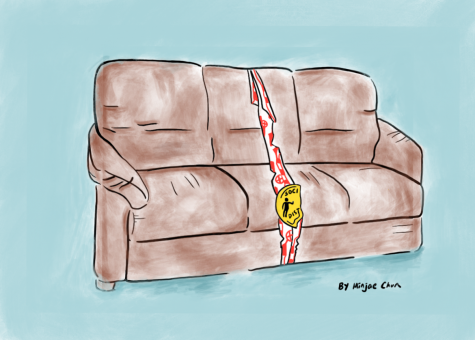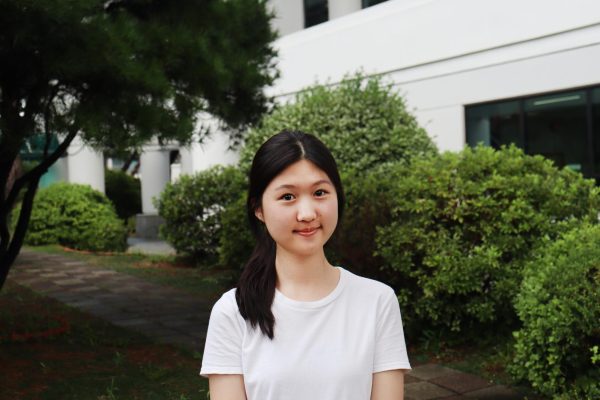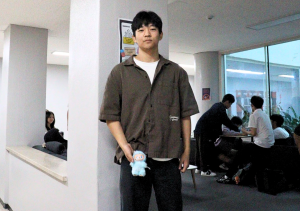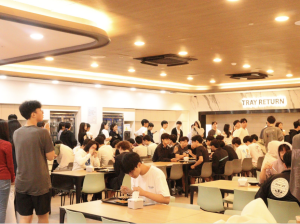Taping Troubles: The Trials and Tribulations
Oct 25, 2021

On Sept. 16, the stripes of non adhesive red-white tape with “social distancing” yellow circles taped on top made their first flashy appearance on the couches around campus. SIS implemented the taping so that students would better abide by social distancing policies, as the pandemic rates are currently on the rise again. Given the many COVID-19 regulation violations occurring within the high school on a daily basis, this effort from the administration and leadership team was commendable, but its impact remains questionable.
Prior to the new initiative, individuals often sat on top of each other, four to five students cramming themselves onto a single couch. Through the lines of tape, the leadership team hopes for students to understand the cruciality of social distancing measures at SIS and that such precautions are a must as COVID cases have skyrocketed in the past few weeks.
However, the issue lies not in the driving intent of the taping, but rather the true impact of it. Though logically, taping down the couches should be effective and leave space for only two people on each couch, students have since found ways to work around this new development.
The taping did not limit the occupation of these couches. Instead, it has been counterproductive, leading more people to cram into smaller spaces. Prior to the mass taping, three people per couch was the default. Now, with the tape dividing the couches into two sections of one and a half cushions rather than three full ones, it is a much more common sight to see two people sitting on either side of the tape, making four students per couch the new default.
The root cause of this evident problem may be attributed to two primary identifiable causes.
First, the method of taping itself does not practically reduce the number of people sitting together on the couches. Only a singular, thin stripe signifies that the entire middle cushion is inaccessible; the gaping space in between the tape and the cushion allows for each student to still seat themselves on half of the middle cushion with ease.
Second, students have nowhere else to hang out with friends in the hallways; many thus resort to sitting on the floor, which still results in flouting COVID social distancing guidelines. With not enough couches to accommodate the many SIS students who want to rest on them, spacing is still a recurring issue that is exacerbated by the taping.
Considering the complications surrounding the current taping technique and the distribution of the couches around campus, a possible solution to diminish the contact between students is the addition of more couches and chairs around the school campus.
There are vacant hallways by the lockers where additional couches could be situated, especially on the third floor. While these corridors occupy little to no students, the hallways nearby are overwhelmed with students lingering by the couches. By granting students more areas to sit, the overarching issue of overcrowding will naturally subside.
Bum Shik Shin, director of the COVID Task Force Team at SIS, emphasizes that no touching is the most basic restriction to best bypass the virus. The allocation of more couches and chairs will consequently disperse the large hoards of students.
Even with the inclusion of more couches, designating the middle cushion as off limits is still a rational—and possibly crucial—method in enforcing social distancing at school. However, instead of taping a thin band to the middle cushion, the complete taping of the cushion altogether could best incentivize students to keep their distance by following the two people per couch rule. The addition of more chairs by the couches enables students to still chat near one another, but each person will have their own individual space, rather than cramming in a single space.
There are many questions that arise from the taping, such as: who is constantly responsible for making sure that students are actually following the restrictions and having only two people sit on each couch? Who will consistently re-tape the couches when the sealings inevitably rip?
Instead of attempting to answer the stream of questions resulting from the taping situation, we must take a look at the issue from a different lens. A better alternative is to implement more couches as it will alleviate responsibility from staff to regulate these taped couches and distribute the student body across campus more effectively.
Perhaps it’s time to say goodbye to the sticky mess that was the candy cane tape and hello to the sweet triumph that is the assurance of student health.






